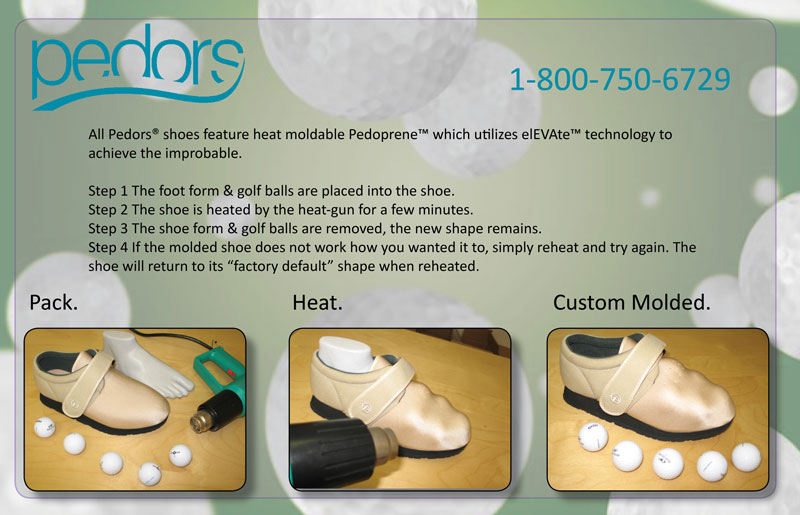Heat Moldable Shoes : Why are Pedors Stretch Shoes different?
When Pedors first introduced the concept of orthopedic stretch footwear in 1996 practitioners quickly appreciated the advantages of using an off the shelf shoe that was easily modifiable on a patient by patient basis. Pedoprene tm, a proprietary blend of neoprene and EVA, can be "spot" heat molded if necessary to accommodate a forefoot deformity like a hammer toe or a bunion or hallux valgus. Pedors became an affordable alternative for patients that may have needed custom shoes in the past.
The other significant benefit of using Pedoprene tm over other stretch material was that it allowed for the depth in the toe box to be formed without using a limiting rigid toe box support - which defeats the distal stretch feature.
Other shoe companies caught on to the benefit of stretch materials but missed some of the core features of what the stretch material needed to be able to do.
What resulted is an expanded market segment of shoes with stretch components in their design, using materials that stretch but do not mold or offer the orthopedic support required.
If a practitoner ever wishes to compare a Pedors Shoe to a stretch shoe they are currently using, please let us send you a free sample to evaluate. The proof as they say, is in the pudding.
The graphic below shows an exageration of what can be done. The YouTube video demonstrates the technique.

